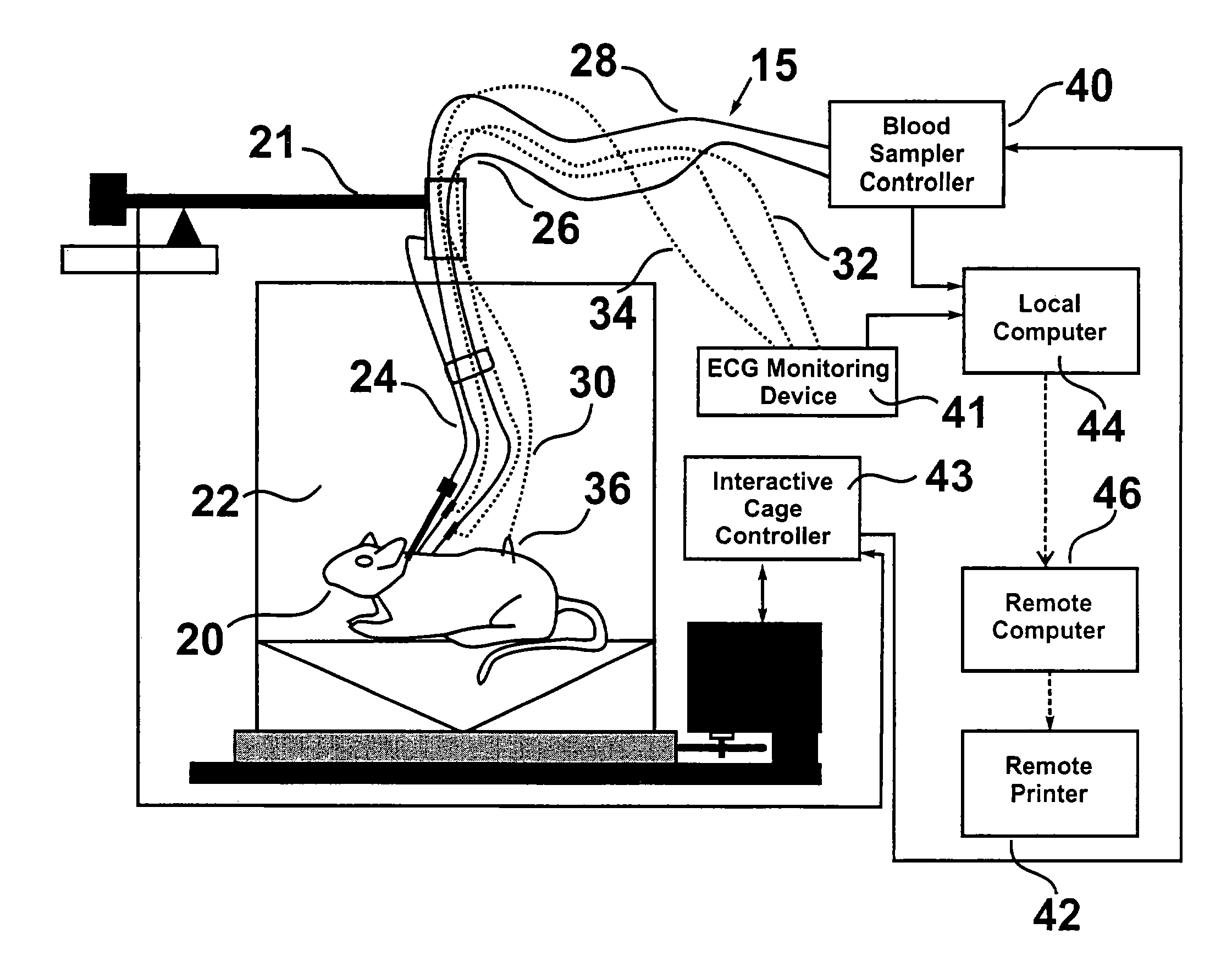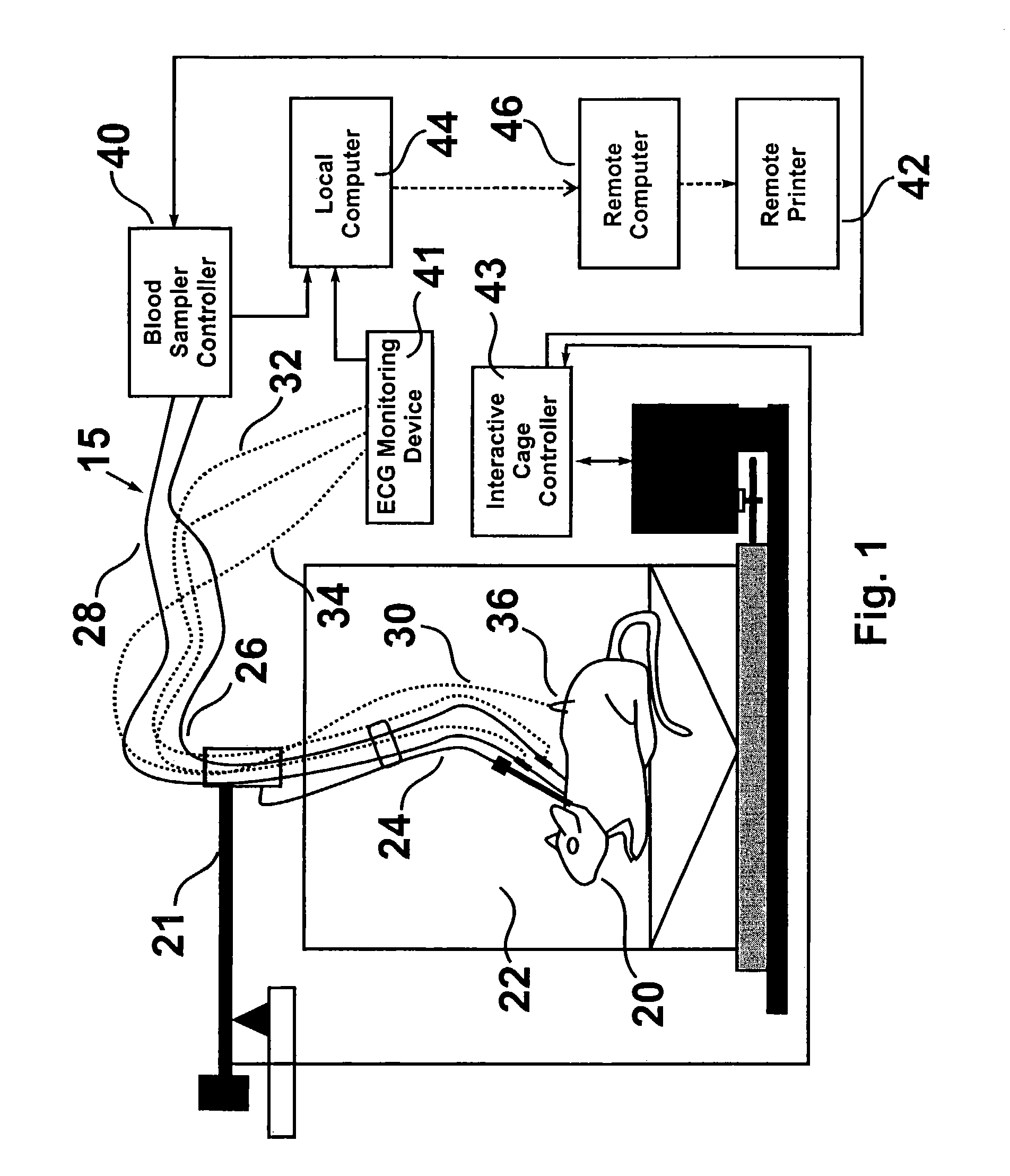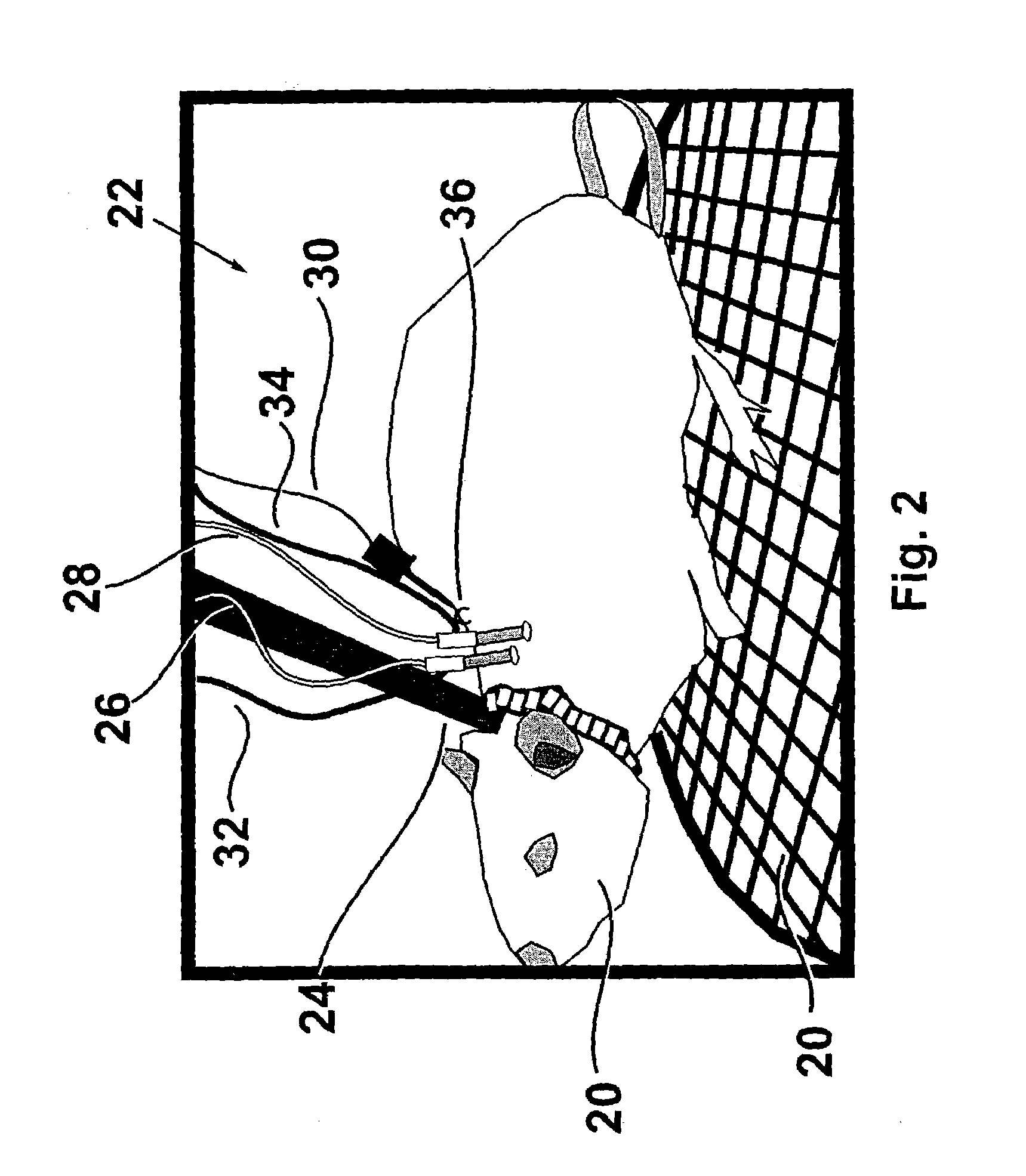Device and method for electrocardiography on freely moving animals
a free-moving animal and electrocardiography technology, applied in the field of electrocardiography, can solve the problems of not being able to accurately portray the effect, painful piercing of the skin of the rat, and not being able to meet the ideal animal model for cardiovascular screening, so as to maintain the free flow of fluid
- Summary
- Abstract
- Description
- Claims
- Application Information
AI Technical Summary
Benefits of technology
Problems solved by technology
Method used
Image
Examples
Embodiment Construction
[0028]The present invention comprises a method to obtain ECGs from animals. As used herein, the term “animal” encompasses all mammals for which it is desired to obtain at least one ECG. Hence, the term “animal” includes laboratory animals, such as mice, rats, dogs, monkeys, other primates, guinea pigs, gerbils, hamsters, sheep, and pigs. The term “animal” also includes humans. The present invention also comprises a device to facilitate this method.
[0029]The method of the present invention expands on the utility of the implantation of intravenous catheters in laboratory animals. Catheters are hollow and typically flexible tubes that are used to conduct fluids from within the body to outside of the body, or vice versa. When placed in veins, or arteries, catheters are generally used to: (a) remove blood samples; (b) introduce liquid solutions of drugs or other substances into the blood stream via infusion; or (c) introduced solutions and then subsequently remove a sample of body fluid ...
PUM
 Login to View More
Login to View More Abstract
Description
Claims
Application Information
 Login to View More
Login to View More - R&D
- Intellectual Property
- Life Sciences
- Materials
- Tech Scout
- Unparalleled Data Quality
- Higher Quality Content
- 60% Fewer Hallucinations
Browse by: Latest US Patents, China's latest patents, Technical Efficacy Thesaurus, Application Domain, Technology Topic, Popular Technical Reports.
© 2025 PatSnap. All rights reserved.Legal|Privacy policy|Modern Slavery Act Transparency Statement|Sitemap|About US| Contact US: help@patsnap.com



